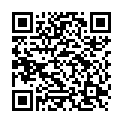|
|
|
| Module code: MST506 |
|
2V+1U+1PA (4 hours per week) |
|
5 |
| Semester: 5 |
| Mandatory course: yes |
Language of instruction:
German |
Assessment:
Written exam, project work
[updated 06.08.2012]
|
MST506 Mechatronics and Sensor Technology, Bachelor, ASPO 01.10.2005
, semester 5, mandatory course
|
60 class hours (= 45 clock hours) over a 15-week period.
The total student study time is 150 hours (equivalent to 5 ECTS credits).
There are therefore 105 hours available for class preparation and follow-up work and exam preparation.
|
Recommended prerequisites (modules):
MST204 Electrical Engineering
[updated 06.08.2012]
|
Recommended knowledge:
Electricity and Magnetism
[updated 06.08.2012]
|
Recommended as prerequisite for:
|
Module coordinator:
Prof. Dr. Günter Schultes |
Lecturer: Prof. Dr. Günter Schultes
[updated 01.10.2005]
|
Learning outcomes:
This course aims to teach students the various ways in which physical effects can generate motion. Students will be introduced to the range of electric motors and fluidic actuators available. They will also learn about thermal actuators, special-purpose actuators and how to distinguish actuators by means of their characteristic curves. Students will also solve theoretical and practical problems on a hydraulic teaching rig and test rig for small electric motors.
[updated 06.08.2012]
|
Module content:
0. Introduction and overview
1 Fluidic actuators
1.1 Fundamentals and elements of hydraulic systems
1.2 Proportional hydraulics
1.3 Experiments on the hydraulics teaching rig
1.4 Fundamentals and elements of pneumatic systems
2 Thermally responsive actuator elements
2.1 Bimetallic actuators
2.2 Shape memory actuators
2.3 Expansion actuators
3 Special-purpose actuators
3.1 Piezoelectric actuators
3.2 Magnetostrictive actuators
3.3 Electrochemical actuators
3.4 Microactuators
4 Electric motors
4.1 Fundamentals of electric motors, current loops in magnetic fields
4.2 Motor components and materials
4.2 Self-commutating motors
4.2.1 Motors with permanent-magnet or electric excitation
4.2.2 DC and AC motors
4.3 Experiments on the motor test rig
4.4 Externally commutated motors
4.4.1 Induction motors, split-pole motors, capacitor motors
4.4.2 Synchronous motors
4.4.3 Specialist motors: Lavet motor, micro-motor
4.4.4 Stepping motors
4.5 Linear motors
4.6 Limited-motion drives
[updated 06.08.2012]
|
Teaching methods/Media:
Lectures and project work
Practical group-based experiments in the fields of hydraulics and electric motors
[updated 06.08.2012]
|
Recommended or required reading:
Actuators in general
W. Roddeck, Einführung in die Mechatronik, Teubner Verlag
P.A.Tipler, Physik, Spektrum Verlag
H. Janocha (Hrsg.), Aktoren, Springer Verlag
B. Heimann, W. Gerth, K. Popp, Mechatronik, Hanser Lehrbuch
Hydraulics
Th. Hillesheim, M. Bill, Grundlagen der Cartridge Ventiltechnik, (Fa. Hydac Flutec)
D. Scholz, Proportional Hydraulik (Fa. Festo Didactic) Springer Verlag 1997
A. Böge, Technische Mechanik, Vieweg 1999, (Grundgesetze der Fluiddynamik)
Pneumatics
W. Deppert, K. Stoll, Pneumatische Steuerungen, Vogel Fachbuch
P. Croser, F. Ebel, Pneumatik, (Fa. Festo Didactic), Springer 1997
New types of actuators
D. J. Jendritza, Technischer Einsatz neuer Aktoren, Expert Verlag, 1998
Electric motors
H. D. Stölting, E. Kallenbach, Handbuch Elektrische Kleinantriebe, Hanser Verlag 2001
E. Spring, Elektrische Maschinen, Springer 1998
G. Fehmel et al, Elektrische Maschinen, Vogel Fachbuch 1996
[updated 06.08.2012]
|


